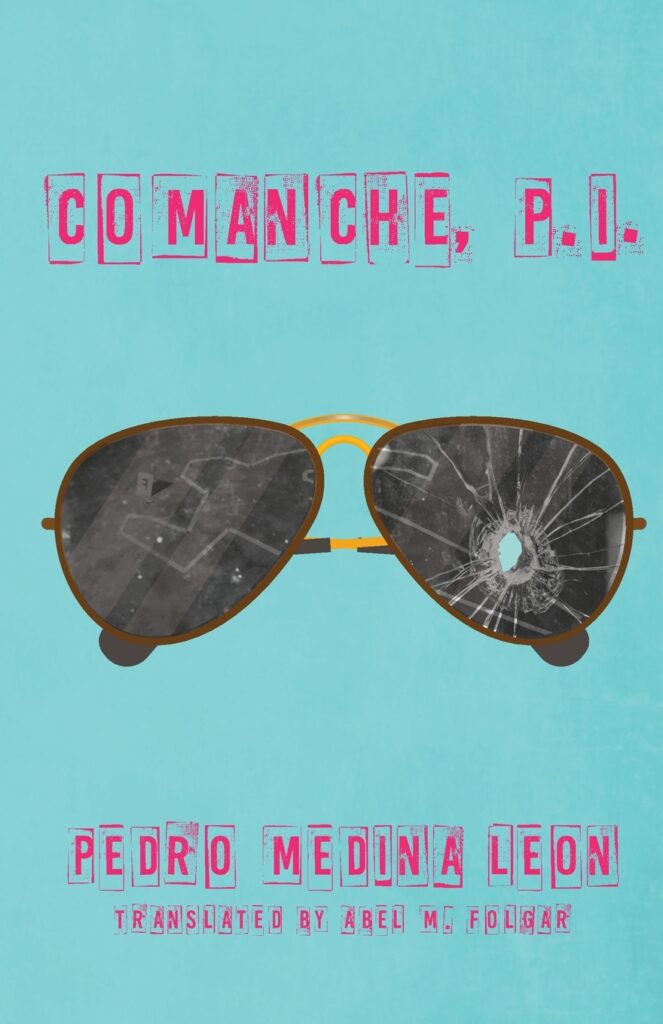Miami has long been a city of contradictions—where the neon glitz of South Beach meets the shadowy underworld of crime, where the waves of Biscayne Bay whisper stories of opportunity and danger alike. In Comanche, P.I., Pedro Medina León immerses readers in this world, crafting a hardboiled detective novel that is both a love letter to classic noir and a vivid, contemporary portrait of Miami’s underbelly.
The novel follows Comanche, a private investigator whose life oscillates between the sun-drenched decadence of Miami Beach and its crime-riddled alleyways. From the outset, Comanche is depicted as a deeply flawed yet compelling figure—an old-school detective with a modern Miami twist. He’s a man of contradictions: tough but weary, street-smart but occasionally reckless, and above all, relentless in his pursuit of the truth. Medina León’s writing ensures that Comanche never becomes a caricature; instead, he is a complex protagonist whose vices and virtues make him all the more human.
The novel is divided into three sections—Ciudad Maldita, Cocaine Cowboys Wannabe, and Delirio South Beach—each evoking a different facet of the city’s criminal landscape. Medina León paints Miami in the hues of noir: its streets are haunted by corruption, drug deals, and sudden bursts of violence, yet they are also alive with Latin rhythms, boozy late nights, and a sense of grim beauty. His prose is crisp and evocative, reminiscent of James Ellroy and Raymond Chandler, but infused with the cultural specificity of Miami’s Latino community.
The novel’s central mystery revolves around the murder of Gregorio Lizárraga, a struggling writer found dead on the Venetian Causeway. Comanche is hired to investigate, and what initially appears to be a straightforward case quickly spirals into a labyrinthine web of deceit, drug trafficking, and power struggles. Along the way, Comanche navigates a world of crooked cops, volatile informants, and dangerous criminals, all while trying to keep his own demons at bay.
What sets Comanche, P.I. apart is its masterful use of atmosphere. Medina León captures the spirit of Miami in all its excess and decay. From the sweat-soaked motels on Alton Road to the dimly lit bars of Washington Avenue, every setting is meticulously crafted. The novel thrives on the tension between Miami’s idyllic postcard image and its harsher realities. The city is more than just a backdrop; it is a character in itself, alive with the pulse of danger and desire.
The dialogue is another highlight. Sharp, witty, and dripping with attitude, the exchanges between Comanche and his various contacts are among the novel’s best moments. Medina León understands the rhythm of noir, the way words can cut like knives or linger like cigarette smoke in the air.
While Comanche, P.I. is a crime novel at its core, it also delves into deeper themes. The book explores the cost of violence, the fragility of justice, and the way past traumas shape present actions. Comanche’s own struggles—his tendency toward self-destruction, his uneasy alliance with law enforcement, his tangled relationships—add depth to the story. He is not a hero in the traditional sense, but rather a man trying to navigate a world where the line between good and evil is perpetually blurred.
The novel also offers a critique of Miami’s darker realities—gentrification pushing out longtime residents, the ever-present influence of organized crime, and the way money dictates morality. Medina León does not romanticize the city’s seedier side, but he also does not shy away from its allure. Miami is depicted as both paradise and purgatory, a city of dreams and nightmares.
Comanche, P.I. is a gripping, atmospheric novel that will appeal to fans of noir fiction and Miami crime stories alike. Pedro Medina León has crafted a tale that is equal parts thrilling and thought-provoking, filled with memorable characters, razor-sharp dialogue, and a richly realized setting. The novel stands as a testament to the enduring appeal of the detective genre, proving that even in a city as modern and ever-changing as Miami, there is always room for an old-school private eye with a cigarette in one hand and a case to crack.

